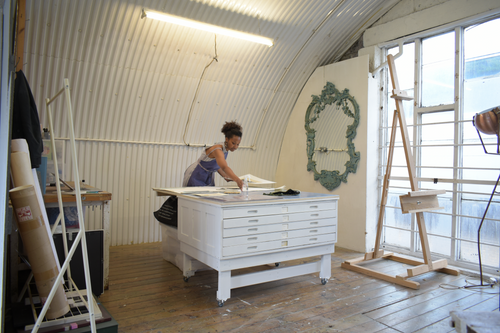
An important aspect of implementing antiracist policies is to listen to BIPOC voices. A few weeks ago we shared some of the diversity and inclusion work being done in the conservation field, and today we will feature a few first-hand experiences of BIPOC professionals in that field.
In January of 2020, Helena Pozniak wrote a piece for the Guardian that documents the problems with lack of diversity in the humanities more generally. “‘I'm used to being the only brown person in the room': why the humanities have a diversity problem” explores how cultural bias and limited voices may account for low numbers of BIPOC postgraduates in subjects such as history and philosophy. Most history taught in schools is primarily white and euro-centric, as one scholar in the UK explains, “If students never see anyone who looks like them in textbooks, they’ll think the subject’s not for them. They won’t feel welcome.” This lack of representation can lead students to not want to enter a field that has consistently excluded them from historical accounts.
For many BIPOC arts & culture professionals, education is just the first hurdle of a career in their chosen field. In June 2020, Ashleigh Brown shared her unique experience as an American-born, Black conservator living and working in the UK. In it, Brown looks back on her own career, and examines the issues of race in the US as well as in the UK. She remarks on the difficulties of working in this field: “We may be on edge, we may be angry, but wouldn’t you be if you had to explain your self-worth repeatedly?” Brown points out that racism isn’t always obvious, and that it isn’t limited to the United States. These subtle microaggressions that Brown and others face are just as important to address.
Last July, Black Art Conservators wrote a statement demanding racial justice in art conservation. The statement, signed by several conservators and allied professionals, explains how museums and cultural institutions perpetuate the oppression of BIPOC communities by choosing not to share their stories and history. It addresses how institutions need to hold themselves accountable, and that the conservation field has the power to preserve and uplift BIPOC voices, ending with the call that “Conservators must take immediate action to destroy the oppressive environment existing at cultural institutions based on the false tenet of white supremacy and eliminate systemic racism across the entirety of our field. It is long overdue for us to take giant leaps towards racial justice and truly begin to transform the field.” Linked from the “Resources” page of the Black Art Conservators website, the “Conservation is Not Neutral” Bibliography provides many readings to further your understanding of non-white voices in the Conservation field, and the “News and Events” page features three recorded webinars that also explore these topics in more detail.
How have you or your organization been working to amplify BIPOC voices? Are any of the direct actions of solidarity from the Black Art Conservators’ Statement things you can address in your community or workplace? Please share any comments or feedback below, email us at info@DHPSNY.org, or connect with us on the DHPSNY Facebook page or DHPSNY Community Facebook Group.
This is part of a biweekly blog series on sharing information, promoting resources, encouraging discussion, and amplifying the voices of Black, Indigenous, and People of Color (BIPOC) doing antiracism work in archives, museums, history sites, and library special collections. DHPSNY is committed to supporting the diverse network of collecting institutions that safeguard and ensure access to historical records and library research materials across New York State. To learn more, visit our first blog post in the series.
Image: Ashleigh Brown, paper conservator and co-owner of The Conservators Ltd.